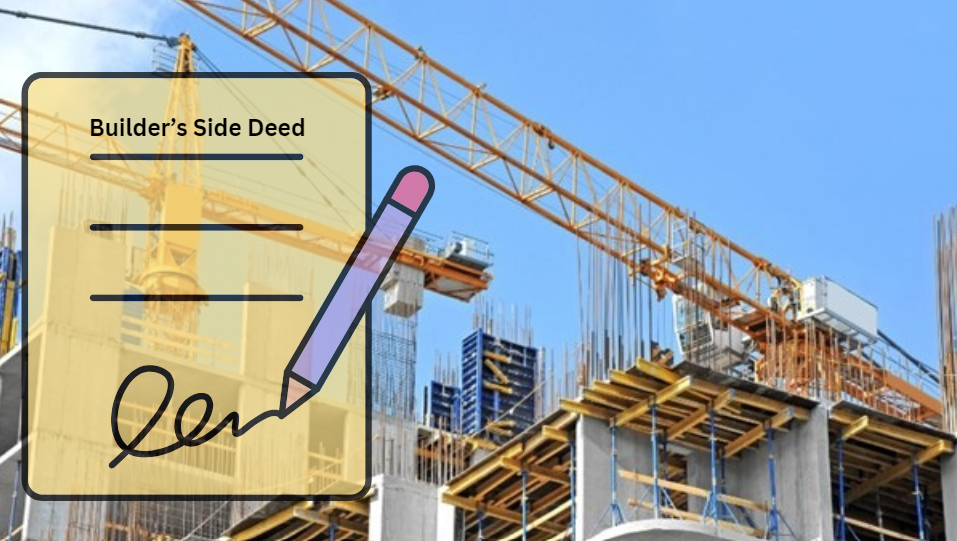
The terms of a Builder’s Side Deed can vary depending on the type of construction contract and the requirements of the financier, however, they are a frequent source of negotiation between parties prior to a project commencing. Standard construction contracts typically do not address third-party financier involvement, making the harmonisation of terms between documents a central negotiation point.
This article will briefly explore the key provisions that are typically included by a financier within a Builder’s Side Deed.
Key Provisions
Security: the financier will usually require the Principal/developer (borrower) to provide adequate security in the event of default under the facility agreement to secure payment of the loan. For example, the financier may require the developer to grant the financier a charge over their title, interests and rights under the construction contract and/or guarantee and indemnity provided by guarantors on terms contained within the facility agreement.
This clause may also stipulate that the creation of the security nor the exercise of any power under the security of the Builder’s Side Deed by the financier, will not itself constitute a default under the construction contract or entitle the builder to exercise any of its rights under the construction contract (i.e. suspension or termination).
Termination and Suspension: the deed will typically impose a restriction on the borrower’s (and/or builder’s) ability to amend, terminate, accept a repudiation or suspend works under the contract. The clause will usually the financier’s written consent prior to the parties actioning any of those rights under the construction contract. This is to ensure that any changes to the construction construct do not comprise the security of the loan.
Step In: The financier will usually need to protect their investment by including a step in provision in the Builder’s Side Deed. Step in provisions provide the financier with an ability to step into the shoes of the borrower in certain circumstances and exercise any rights, powers, privileges or authorities of the borrower (being the Principal) under the construction contract.
Such circumstances include, for example, where the builder has a right to terminate the construction contract due to the insolvency or breach of the Principal, in which case the financier may wish to exercise its right to step in to ensure the continuance of the construction project.
If the financier exercises its step in rights, they are usually required to provide notice and the deed should provide that all obligations previously held by the principal to the construction contract will be assumed and that any sums due and payable (unpaid, at present and in the future) will be paid by the financier stepping in.
Novation: further to the above, the Builder’s Side Deed may also provide that once a step in notice has been issued and the financier has taken over the rights and obligations of the Principal, the financier may request the builder execute a deed of novation to novate the construction contract to either:
- The financier;
- A new purchaser of the project/project land; or
- Another person nominated by the Financier who has the necessary financial resources to assume the developer’s rights and obligations under the building contract.
A deed of novation transfers party’s rights to a third party, allowing the contract to continue unchanged.
Sale and transfer: the deed will typically contain a clause governing the conditions upon which the financier (or its receiver or appointed representative) can transfer or assign the borrower’s rights under the contract pursuant to the sale of the borrower’s business or the project. The risks involved with the builder will be discussed in next weeks article.
Furthermore, it is not uncommon to see financier’s insisting on provisions that insist upon approval of variations and obligations on the builder to provide notices to the financier (thereby increasing the risk and obligations placed on the builder in addition to those contained within the construction contract).
Next week we will consider some of these risks, including strategies to mitigate this risk for not only the builder, but both parties to prevent misunderstandings, delays and disputes down the track that could otherwise jeopardise the project’s success and financial stability.
Lamont Project & Construction Lawyers
A well drafted Builder’s Side Deed is essential for mitigating risks and ensuring clarity among the developer, financier and the builder throughout the construction project. The team at LPC Lawyers can to assist across all contractual drafting and negotiations. Through providing clients support across the duration of a project’s lifecycle, we can assist in ensuring a project’s successful and efficient delivery.
If you have any questions or concerns about your current or future projects, please do not hesitate to contact LPC Lawyers for a discussion on how we can assist.
The contents of this article is for information purposes only; it does not discuss every important topic or matter of law, and it is not to be relied upon as legal advice. Specialist advice should be sought regarding your specific circumstances.
Contact: Peter Lamont or Stephanie Purser
Email: [email protected] or [email protected]
Phone: (07) 3248 8500
Address: Suite 2, Level 2, 349 Coronation Drive, Milton Qld 4064
Postal Address: PO Box 1133, Milton Qld 4064
